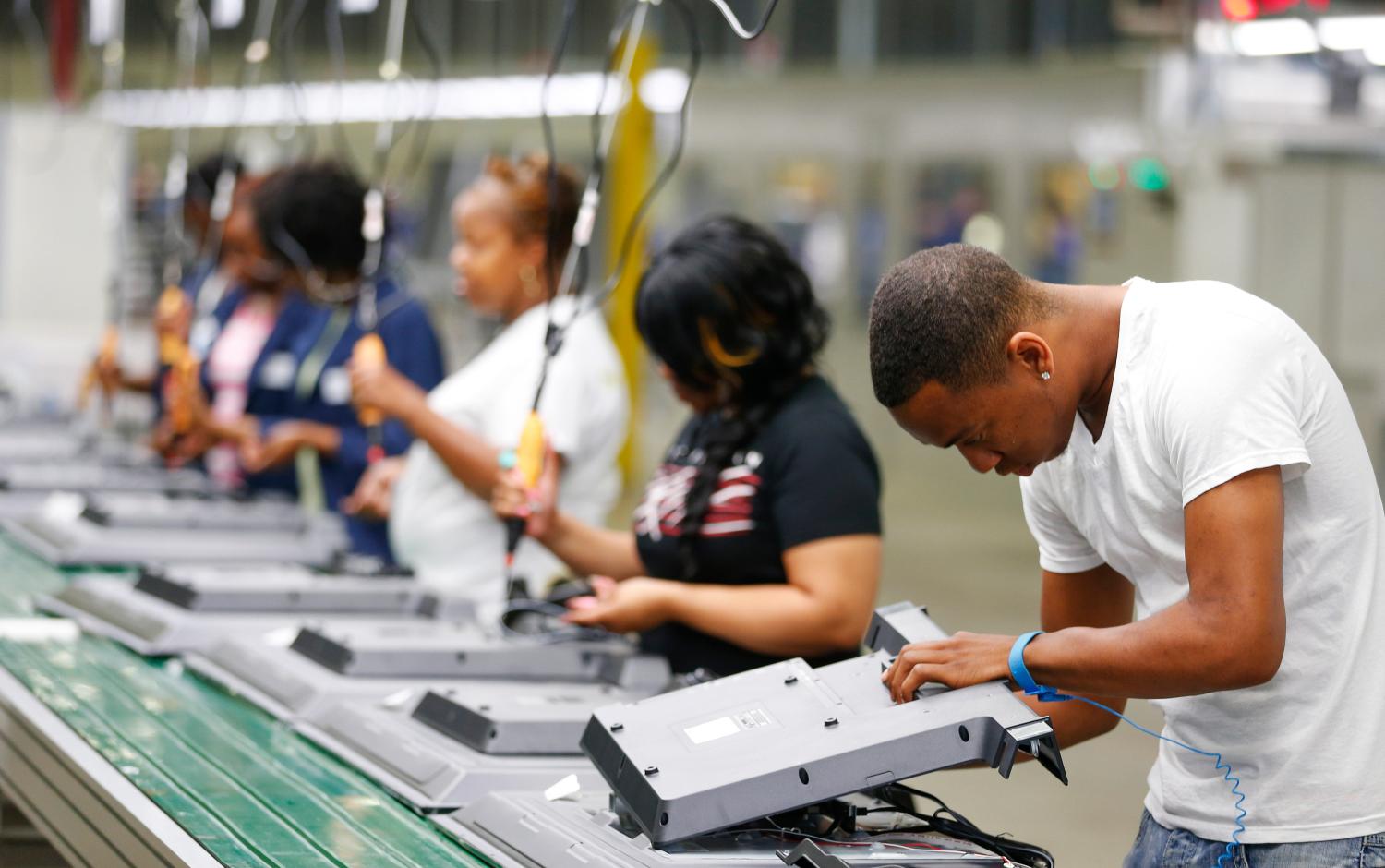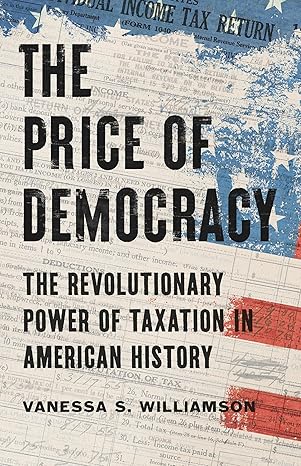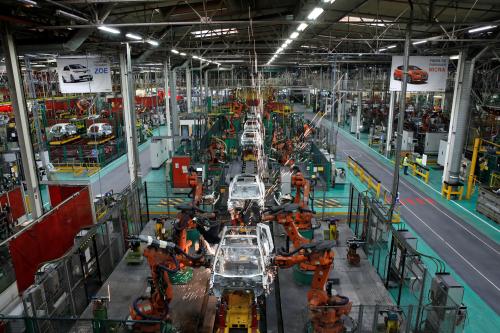A great deal of anxiety now exists in the U.S. over the future of jobs in an era of automation. Indeed, there are widespread fears that robots and artificial intelligence (AI) will increasingly perform the tasks currently performed by most Americans, rendering human workers increasingly obsolete over time.
Of course, this is not the first time in history that such fears have been expressed. The Luddites in 19th Century Britain were convinced that machines would largely eliminate human work over time. Much more recently and in the U.S., anxiety appeared in the “automation scare” of the late 1950s and early 1960s, when many Americans first became aware of computers and their potential to displace workers. And, even in the previous decade, fears that technology would enable employers to “offshore” vast quantities of US jobs to China or India have also been common at certain points in time.1
In each of these cases, the worst fears expressed by critics of automation have never come true; indeed, there has been no long-term trend whatsoever towards higher unemployment over time as automation has increased. As economists frequently explain, automation creates new jobs while eliminating older ones, in patterns that have held up again and again over time.
But is this time different? In other words, because of their greater “humanness” and abilities to learn more functions over time, will robots and AI present much greater challenges to human employment than ever before, resulting in more widespread job displacements and unemployment, or lower wages for those who continue to work?
And, even if this time is only somewhat different, does this suggest that training for specific occupational and industrial tasks—of the type often provided at community and 4-year colleges—is becoming outdated? Such investments could become obsolete as many occupations disappear or become completely revamped. Accordingly, some analysts urge educators to mostly focus on teaching a range of general skills—especially those that are technical, social/communicative or creative—that will make workers much less easily replaceable in a highly automated world.
We consider the merits of these arguments below.
The Standard Economist View of Effects of Automation2
Automation eliminates the number of workers needed per unit of good or service produced. By reducing unit costs it raises productivity and, in a competitive market, product prices should decline. All else equal, this will raise consumer demand for the good or service in question.
Whether or not this rise in product demand is sufficiently large to raise overall employment for the product depends on whether the fall in workers needed per unit of production is proportionately lesser or greater than the rise in the numbers of units demanded; if lesser, than product demand will rise.3
Indeed, we have seen such a scenario play out in a number of historical examples. In the most famous, Henry Ford’s adoption of an assembly line to produce his Model T reduced car costs and prices so much that it led to a dramatic increase in demand for them and for the workers building them, since the autos were for the first time affordable to the middle class in a mass market. A similar story could be told about the production of personal computers in the 1980s and 1990s and the production of cell phones in this century.
More broadly, the rising productivity and falling prices associated with automation should increase workers’ real wages and generate new consumer spending, for other goods and services as well as the ones being automated. This new demand should raise employment and/or wages, at least in those other markets. And, as long as labor markets are flexible, there are no reasons why the new jobs created in all of these sectors shouldn’t be sufficient to return us to employment levels enjoyed before the automation began.
Of course, not everyone is left better off by this process. Some workers whose tasks can mostly be performed by machines will be displaced, while demand is enhanced for others who can work along with the new machines—perhaps as technicians or engineers but also in a range of newer tasks that the machines cannot perform, including more complex analysis or social interactions with customers and coworkers.
In the jargon of labor economists, the machines substitute for the former but complement the latter; the former will face declining wages and/or employment while the latter will face rising labor demand and better employment outcomes. In addition, workers and their employers will have an incentive to adjust to the new technology by investing in education or training to give them the skills that now complement the new machines and pay better than before.
Is This Time Different?
But, because they believe that AI will lead machines to replace human work along so many dimensions, several writers or analysts (e.g., Avent, 2016; Shift Commission, 2017) foresee a future in which automation could lead to widespread unemployment over time. In this scenario, the numbers of job displacements overwhelm those of newly created jobs. Those who believe this scenario will come to pass—including such well-known public figures as Elon Musk—often argue for dramatic new policy responses, such as universal basic income support by the government, to protect living standards among the unemployed masses.4
A somewhat different concern is that, even if new jobs are created in sufficient number, automation will occur so rapidly and so broadly that many or most American workers—and certainly the young—will have to repeatedly retool themselves for new work over their life courses. The best known proponent of this view is New York Times columnist Thomas Friedman, who argues that we have entered an “age of acceleration” where the speed and spread of automation and globalization now greatly outpace our individual and public capacities to adapt to them. He writes, “Every middle class job today (my emphasis)….requires more skill or can be done by more people around the world or is being buried—made obsolete—faster than ever.” On a different occasion, Friedman writes “If you want a decent job that will lead to a decent life today, you have to work harder to regularly reinvent yourself” or to “reinvent, re-engineer and reimagine that job.” In other words, every worker will need to become a serial entrepreneur and a major self-promoter to remain employed.5
Of course, such fears and comments strike most economists as at least a bit overwrought. But, if true, they raises a fundamental question: Why should workers (or their employers) ever invest more than minimally in industry- or job-specific training, if these jobs will be so temporary or at such risk of disappearing? Though Friedman and others with these views embrace postsecondary education for job skills, the implications of their views for any specific kinds of occupational or sectoral training are rarely acknowledged.
In such a situation, general skills training—especially for tasks that the new robots will not be able to do anytime soon—make the most sense. According to many educators or workforce analysts, the skills in which students should invest (often referred to as “21st Century skills”) include technical literacy, critical thinking and problem-solving, adaptability to new work environments, and social/communication skills (Trilling and Fadel, 2009; National Research Council, 2012, 2017; Gormley, 2017).
On the other hand, labor economists believe that workers mostly pay for general skill development (often in the form of lower wages, when the training occurs on the job), while employers are willing to share more in the costs of developing worker skills more specific to their needs.6 A shift away from specific towards more general skill training will thus involve a shift of the costs of training away from employers towards workers (or the public), and less sharing of any risks involved in whether the market rewards those skills over time.
Another concern arises regarding not the quantity of new jobs created but their quality. To date, no serious economist believes that digital technologies have led to mass unemployment. But, in what many refer to as skill-biased technical change (SBTC), automation tends to replace less-educated workers performing routine tasks while it creates new demand for more-educated workers performing more complex analysis or engaging in social interactions and communication.
Because of this, millions of employees with high school or less education, in production or clerical jobs that once provided reasonably good compensation, have been replaced by digital technologies (and globalization), creating a “hollowing of the middle” in the job market and rising inequality between more- and less-educated workers in the past 30 or more years. If anything, this process accelerated during the Great Recession, and has only partly been reversed with our recent job market recovery.7 In turn, the loss of good-paying jobs to less-educated workers has led to a range of other economic and social ills, such as labor force withdrawals for prime-age men, family dissolution, and the opioid crisis in communities across the country (Doar et al., 2017).
Looking ahead, as AI and robots improve in quality, increasing numbers of tasks now performed by those with BAs or higher education—in fields such as medicine, law, accounting and finance—could find themselves as substitutes rather than complements to the new machines. This is particularly true for those tasks involving almost any kind of data analysis.
In this situation, labor market inequality will continue to rise, as fewer workers over time remain complements to the machines. Earnings gaps between those proficient and not proficient in 21st Century skills will continually grow. In addition, the owners of the robots will benefit at the expense of most workers, creating capital biases as well as skill biases in technical change.8
Does the Evidence to Date Support this Bleak View?
While many of us find the more extreme future scenarios of mass worker substitutability outlined above a little frightening, labor market realities to date show little sign of it occurring.
For one thing, a widespread increase in the replacement of workers through automation should generate rising productivity growth and rising labor market turnover. Yet, to date, we have had exactly the opposite—very flat productivity growth and declining turnover (or churning) over time (Baily and Bosworth, 2015; Malloy et al., 2016; Atkinson and Wu, 2017). If anything, many economists argue in favor of more and faster automation of production than we have seen to date (e.g., Council of Economic Advisers, 2016), as long as we can improve our education and income supports for displaced workers to help them adapt to any such changes.
In addition, there has been some evidence of good job creation as a direct result of automation, even for non-college educated workers. For instance, economist Michael Mandel of the Progressive Policy Institute (PPI) shows that, as e-commerce replaces more traditional “brick and mortar” retail trade, jobs in warehouses (often called “fulfilment centers”) and delivery by trucks replace those in sales, providing significantly higher compensation than before.
Of course, the extent to which these new jobs will last, as autonomous vehicles and drones replace delivery workers and robots replace those in warehouses, remains an open question. But the mere existence of these new technologies does not guarantee their quick and widespread adoption and use, especially in the short-term. As has been recently emphasized in reports by the National Academies of Sciences and McKinsey Global (both in 2017), the pace and locus of automation adoption will depend heavily on a range of unforeseeable factors, including market forces (such as their costs relative to those of existing inputs), institutional preferences and practices (by employers and educational providers) and a range of government policies that might regulate their adoption or assist with firm and worker adaptations.
The McKinsey report also argues that very few workers will be fully replaced by robots, while many perform at least some tasks that will be increasingly automated. This scenario provides greater scope for worker retraining for new tasks on their jobs that will enable them to remain employed at the same or other workplaces.9
A closer look at the current labor market also provides a more nuanced view of coming changes. For one thing, the alleged “hollowing out” of the middle of the labor market by automation is not as straightforward as some suggest. In my own work (Holzer 2015), an “old middle” consisting of production and clerical jobs for workers with high school or less education is being at least partially replaced by a “new middle” set of jobs in health care, advanced manufacturing, information technology, transportation/logistics and many services that pay reasonably well but require some postsecondary education. Instead of a surplus of workers, employers in these sectors actually have some difficulty filling existing middle-wage jobs, which runs counter to what we would expect if robots were quickly and easily replacing workers in them.10 And, as Baby Boomers continue to retire in these sectors, and are increasingly replaced by immigrant or minority workers with less education, employer difficulties filling middle-wage positions will likely grow, creating more opportunities for workers who gain the specific skills needed for these jobs.11
In addition, a range of sub-BA certificates or associate degrees now prepare workers for high-demand and well-compensated jobs in specific occupations and industries, such as those described above. Elsewhere, I have argued that there is high variance in labor market rewards to sub-BA credentials, and that too many students earn terminal associates of arts (AA) degrees in liberal studies without such value. But the availability of high-value associate of science or applied science (AS or AAS) degrees, plus occupational AAs and certificates, create strong opportunities for disadvantaged students to improve their earnings potential, and that more such specific occupational learning could be encouraged through policy and practice.12
In addition, we know from several rigorous evaluation studies that sector-based workforce training—where community colleges (or other providers) create partnerships with employers or associations in specific industries and train workers for high-demand jobs in those sectors—generate quite large and lasting impacts on earnings for participating workers.13 In a somewhat similar vein, the returns in earnings to registered apprenticeships for disadvantaged students are very sizable as well, and generate benefits to participating employers too. Indeed, there is widespread bipartisan agreement on the need to expand apprenticeships and other sub-BA modes of training.14 And labor market returns to students who participate in high-quality career and technical education (CTE) for specific industries, such as Career Academies, are high as well (Kemple, 2008).
It seems prudent to understand the potential risks from automation to workers with specific training, and to modify the education and training that workers receive accordingly.
Overall, given the strong current and likely future returns for workers from these modes of occupation- or industry-specific training, it make little sense to eschew them out of fear that some unknown future automation will render them obsolete. On the other hand, it seems prudent to understand the potential risks from automation to workers with specific training, and to modify the education and training that workers receive accordingly.
Policy Implications
What does the analysis above imply for workforce development policy and practice? There are three main takeaways:
First, students should receive strong general training in “21st century skills” whenever they receive occupation- or industry-specific training. My Georgetown colleague William Gormley (2017) argues persuasively that CTE students in high school and beyond should receive strong training in problem-solving and other forms of critical thinking.
In certificate and especially occupational associate programs in community colleges, a mix of general skills and specific content should be (and often is) provided as well. In addition, apprentices increasingly receive some classroom instruction in addition to on-the-job training, and earn community college certificates or associate degrees in addition to their occupational certification. These credentials should make their skills more portable across firms and even industries, and could also help prevent layoffs to workers in the face of new automation. The general skills they build should make them more trainable in new and complementary tasks when substitution for their performance of other tasks occurs.
Second, if and when these displacements do occur, we should have more robust models of “lifelong learning” available to such workers to provide them with better retraining options than now exist. To date, most evaluations of job training for displaced workers have not generated evidence of cost-effective impacts, though there are exceptions (e.g., Jacobson et al., 2003) for those training at community colleges for high-demand or technical fields (like nursing). But, given the much wider range of workers who will be potentially displaceable in the future, we need to develop a broader range of high-quality retraining options for them, along with strong career counseling—which is now available at roughly 3000 One-Stop offices, now called Job Centers, across the country. Funding for these centers through the Workforce Opportunity Investment Act (WIOA) should be enhanced rather than cut (as the Trump Administration has recently proposed to do).
A number of policies and practices could help workers finance their retraining. For instance, we could expand the ability of displaced workers to receive public funding for such training—perhaps through individual “lifelong learning accounts,” which currently exist in Maine and the state of Washington.15 In these accounts, workers can save some amounts of tax-deferred dollars each year that employers can match. Similar ideas have been proposed at the federal level.16 The state-level experiences should be evaluated to see if they should be adopted federally. Section 127 of the federal tax code also allows employers to provide tax-free educational assistance to workers, which could help workers adapt to new technologies and learn new skills. And growth in online courses should also make such education more accessible to adults in different circumstances, especially when they are still working before layoffs occur.
Third, for displaced workers for whom retraining is not a realistic or appealing option, temporary income supports in the form of unemployment and especially wage insurance are more sensible policy options than the public provision of a universal basic income. Wage insurance, in particular, replaces part of displaced workers’ lost earnings when they become reemployed at lower wages.17 For instance, if a worker only finds a job at $10 an hour, while previously they worked for $20, wage insurance might be provided by the public sector to offset half of this loss (up to a capped amount) for a specified time period (like 2 years). The payment incentivizes such workers to become reemployed more quickly, even if available jobs pay less than those that they lost.
While economists find publicly-funded wage insurance appealing, we provide it very rarely in the U.S. and few workers are eligible. To date, federal wage insurance has only been available to workers that are both 50 years and above in age and it can be certified that they lost their jobs to imports. But this latter condition is quite arbitrary and makes little economic sense. Indeed, the potential availability of such wage insurance due to technological change could make lower-wage jobs more appealing to some workers and would prevent labor force nonparticipation among many (Doar et al., 2017). Of course, in more depressed regions, some mode of net new job creation such as subsidized jobs or infrastructure set-asides might be needed as well to ensure that all displaced workers who need a job can find one.
This package of appropriate pre-and post-displacement training plus temporary income supports seems more sensible than a broad provision of universal income supports, which presume that work in general is not available and, if work is available, would reduce work incentives.
REFERENCES
Acemoglu, Daron and Jorn-Steffen Pischke. 1999. “The Structure of Wages and Investment in General Training.” Journal of Political Economy.
Atkinson, Robert and Wu. 2017. False Alarmism: Technological Disruption and the US Labor Market, 1850-2015. Information Technology and Innovation Foundation, Washington DC.
Autor, David and David Dorn. 2009. “This Job is Getting Old: Measuring Changes in Opportunities Using Occupational Age Structures.” National Bureau of Economic Research Working Paper.
Autor, David et al. 2017. “The Fall in the Labor Share and the Rise of Superstar Firms.” IZA Discussion Paper.
Avent, Ryan. 2016. The Wealth of Humans: Work, Power and Status in the 21st Century. New York: St. Martin’s Press.
Baily, Martin and Barry Bosworth. 2015. Productivity Trends: Why is Growth So Slow? Brookings Institution Presentation, March 26.
Blinder, Alan. 2006. “Offshoring: The Next INdustrial Revolution?” Foreign Affairs, March/April.
Council of Adult and Experiential Learning. 2008. Lifetime Learning Accounts: Summary of HR 6036, Lifelong Learning Accounts Act of 2008.
Davenport, Thomas and Julia Kirby. 2016. Only Humans Need Apply: Winners and Losers in the Age of the Smart Machines. New York: Harper Collins.
Doar, Robert et al. 2017. Getting Men Back to Work: Solutions from the Left and Right. Washington DC: American Enterprise Institute.
Drew, Zack. 2017. “Elon Musk: Prepare for Universal Basic Income.” TRU NEWS, June 1.
Elliott, Mark and Anne Roder. 2017. Escalating Gains: Quest’s Sector Strategy Pays Off.
Council of Economic Advisers. 2016. Artificial Intelligence, Automation and the Economy. Washington DC: Executive Office of the President.
Freeman, Richard. 2016. “Who Owns the Robots Rules the World.” Harvard Magazine.
Friedman, Thomas. 2013. “Need a Job? Invest It.” New York Times, March 30.
Friedman, Thomas. 2012. “New Rules.” New York Times, September 8.
Friedman, Thomas. 2016. Thank you for Being Late: An Optimist’s Guide to Thriving in the Age of Accelerations. New York:
Gormley, William. 2017. The Critical Advantage: Developing Critical Thinking Skills in School. Cambridge MA: Harvard Education Press.
Hendra, Richard et al. 2016. Encouraging Evidence on a Sector-Focused Advancement Strategy. New York: MDRC.
Hershbein, Brad and Lisa Kahn. 2016. “Do Recessions Accelerate Routine-Biased Technological Change? Evidence from Vacancy Postings.” NBER Working Paper.
Hollenbeck, Kevin. 2012. “Return on Investment in Workforce Development Programs.” W.E. Upjohn Institute for Employment Research. Kalamazoo MI.
Holzer, Harry. 2015. Job Market Polarization and US Worker Skills: A Tale of Two Middles. Brookings Brief.
Holzer, Harry. 2016. “Worker Skills and the US Labor Market: What Role Should Policy Play?” In M. Strain ed. The US Labor Market: Questions and Challenges for Public Policy. Washington DC: American Enterprise Institute.
Holzer, Harry and Sandy Baum. 2017. Making College Work: Improving Outcomes for Disadvantaged Students. Washington DC: Brookings, forthcoming.
Jacobson, Louis et al. 1993. “Earnings Losses of Displaced Workers.” American Economic Review.
Jacobson, Louis et al. 2003. “Should We Teach Old Dogs New Tricks? Community College Retraining for Older Workers.” Federal Reserve Bank of Chicago Working Paper.
Krugman, Paul. 2012. “Rise of the Robots.” The New York Times, December 8.
Kearney, Melissa et al. 2015. “The Future of Work in the Age of the Machine.” Hamilton Project, the Brookings Institution. Washington DC.
Kemple, James. 2008. Career Academies: Long-Term Impacts on Work, Education and the Transition to Adulthood. New York: MDRC.
Lakida, Susan. 2008. “Learning Lasts a Lifetime.” Society for Human Resource Management., Washington DC.
Lalonde, Robert. 2007. The Case for Wage Insurance. Washington DC: Council on Foreign Relations.
Lerman, Robert. 2014. “Expanding Apprenticeship Opportunities in the United States.” The Brookings Institution, Washington DC.
Maguire, Sheila et al. 2010. Tuning Into Local Labor Markets. Philadelphia: PPV.
Malloy, Raven et al. 2016. “Understanding Declining Fluidity in the US Labor Market.” Brookings Papers on Economic Activity. No. 1.
Mandel, Michael. 2017. “Update on eCommerce and Brick-and-Mortar Retail Jobs.” Blog Posting, Washington DC: Progressive Policy Institute.
McKinsey Global Institute. 2017. A Future That Works: Automation, Employment and Production.
Modestino, Alicia et al. 2015. “Upskilling: Do Employers Demand Greater Skill When Workers are Plentiful?” NBER Working Paper.
National Research Council. 2009. Education for Life and Work: Developing Transferable Knowledge and Skills in the 21st Century. Washington DC: National Academies Press.
National Academies of Science. 2017. Building a Skilled Technical Workforce in the US. Washington DC: National Academies Press.
National Academies of Science. 2017. Information Technology and the US Workforce: Where Are We and Where Do We Go From Here. Washington DC: National Academies Press.
Reed, Deborah et al. 2012. An Effectiveness Assessment and Cost-Benefit Analysis of Registered Apprenticeship in 10 States. Princeton NJ: Mathematica Policy Research.
Rothstein, Jesse. 2012. “The Labor Market Four Years into the Crisis: Assessing Structural Explanations.” Industrial and Labor Relations Review.
Shift Commission on Work, Workers and Technology. 2017. Report of Findings. New York: Bloomberg.
Trilling, Bernie and Charles Fadel. 2012. 21st Century Skills: Learning for Life in Our Times. San Francisco: Jossey Bass.
The author did not receive financial support from any firm or person for this article or from any firm or person with a financial or political interest in this article. He is currently not an officer, director, or board member of any organization with an interest in this article.
-
Footnotes
- See, for instance, Blinder (2006).
- See Kearney et al. (2015) for a good recent summary of this mode of thinking.
- The exact number of jobs created in a sector when costs and prices decline will depend on the elasticity of demand for the product and the extent to which the market for that product is competitive. All else equal, more competitive markets make demand more elastic and generate more when prices decline.
- See Drew, 2017.
- See Friedman (2012, 2013, 2016).
- This is true because, the more general the training, the more likely that the worker will leave before the employer has time to recoup the costs of the training investment. However, in the presence of market failures like imperfect information, this is less likely to be true (Acemoglu and Pischke, 1999).
- Labor economists continue to debate the extent to which rising inequality and the “hollowing of the middle” are due to market forces (like SBTC and globalization) v. institutional forces, like declining unionism. On the issue of the extent to which rising skill requirements are purely cyclical or more secular see Modestino et al. (2015) v. Hershbein and Kahn (2016).
- For discussion of capital biases in technical change see Freeman (2016) and Krugman (2012), and more recently Autor et al. (2017).
- For a popular discussion of how workers can learn to become more complementary with the new technology see Davenport and Kirby (2016).
- See the National Academies of Science report (2017) on difficulties in the US in creating optimal supplies of skilled technical workers. Economists also continue to disagree on the extent to which “skills mismatch” or “skills gap” characterize various labor markets; the absence of wage growth in many such markets dissuaded many from the notion of a “shortage,” though wage increases in many sectors until recently were likely dampened by the Great Recession. See Rothstein (2012) and Holzer (2016).
- Autor and Dorn.(2009) argued that many Baby Boomers were retiring from declining economic sectors, though the issue of whether their retirements will exacerbate employer difficulties finding skilled workers in particular sectors remains an open one.
- See Holzer and Baum (2017).
- For rigorous evidence of positive Impacts of sectoral training on earnings see Elliott and Roder (2017), showing that Quest in San Antonio raised earnings for at least 6 years with no sign of fadeout. See also Maguire et al. (2010) and Hendra et al. (2016).
- Evidence on the impacts of apprenticeships on earnings can be found in Lerman (2014), Reed et al. (2012) and Hollenbeck (2012).
- See Ladika (2008).
- Congressmen Rahm Emmanuel (D-IL) and Jim Ramstad (R-MN) proposed a Lifelong Learning Accounts Act in 2008 in which refundable matching tax credits would be created for contributions into accounts by lower to middle-income workers. They also included tax credits for employer matching funds in their proposal. See the Council for Adult and Experiential Learning (2008).
- Displaced workers often earn less after becoming reemployed than before, because they lose specific human capital and seniority (Jacobson et al., 1993). For an economic argument in favor of wage insurance see Lalonde (2007).
The Brookings Institution is committed to quality, independence, and impact.
We are supported by a diverse array of funders. In line with our values and policies, each Brookings publication represents the sole views of its author(s).








